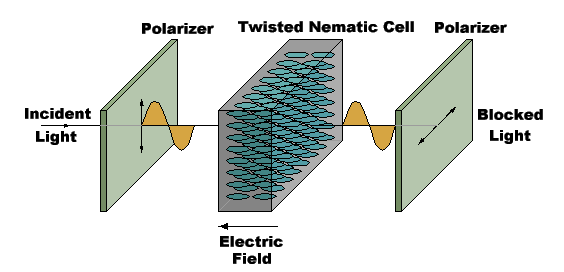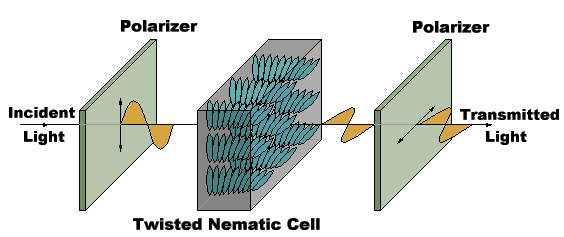Liquid Crystal Displays (LCDs)
 |


Currently, the most popular alternative to the CRT is the Liquid Crystal Display
(LCD). LCDs are organic molecules that, in the absence of external forces, tend
to align themselves in crystalline structures. But, when an external force is
applied they will rearrange themselves as if they were a liquid. Some liquid
crystals respond to heat (i.e. mood rings), others respond to electromagnetic
forces.
When used as optical (light) modulators LCDs change polarization rather than
transparency (at least this is true for the most popular type of LCD called
Super-twisted Nematic Liquid crystals). In their unexcited or crystalline state
the LCDs rotate the polarization of light by 90 degrees. In the presence of
an electric field, LCDs the small electrostatic charges of the molecules align
with the impinging E field.
The LCD's transition between crystalline and liquid states is a slow process.
This has both good and bad side effects. LCDs, like phosphors, remain "on"
for some time after the E field is applied. Thus the image is persistent like
a CRT's, but this lasts just until the crystals can realign themselves, thus
they must be constantly refreshed, again, like a CRT.
The book Hearns & Baker is a little confusing in describing how LCDs work (pp. 47-48). They call the relaxed state the "On State" and the excited state the "Off State". Their statement is only true from the point of view of the pixels when the LCDs are used in a transmissive mode (like on most laptops). The opposite is true when the LCDs are used in a reflective mode (like on watches).